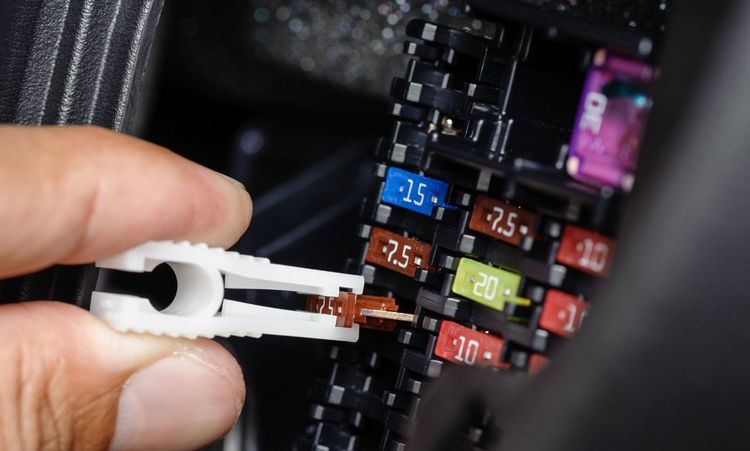Winter brings beauty, but it also brings rough conditions that punish vehicles. Cold air, icy mornings, frozen roads, and harsh winds affect systems that normally work smoothly. Many drivers expect their cars to handle everything without complaint. Reality feels different once temperatures start dropping. A car that performs fine in autumn may struggle once winter arrives. Little problems grow faster in cold weather because parts lose flexibility and fluids react differently. You may have noticed odd noises or slow starts after the first freeze. Many people shrug these issues off, but winter rarely forgives neglect.
This article explains how winter weather can damage your car, why these issues appear, and the steps that help prevent them. Each section focuses on a key system affected by the cold. Short, clear paragraphs make this guide easy to follow when you need fast answers. If you have ever wondered why winter seems so hard on your vehicle, you will find answers here.
Why Does Winter Weather Create Problems for Vehicles?
Winter creates unique challenges because cold temperatures change how materials behave. Metal shrinks. Rubber stiffens. Plastic becomes brittle. Fluids thicken and move slowly. All these changes force your vehicle to work harder, even during short trips. You might not notice it immediately, but your car feels the strain with every cold start.
Many problems appear because winter amplifies weaknesses. A part that works fine in summer may fall apart when the temperature dips. Electrical systems lose efficiency. Seals and hoses lose flexibility. Sensors react slowly. Winter also introduces salt, slush, and road chemicals that speed up corrosion.
Moisture plays a major role as well. It collects in tiny spaces and freezes overnight. Frozen moisture expands and pushes parts apart. This can trigger cracks, leaks, and pressure changes. Winter conditions basically stack one problem on another. That is why vehicles that skip maintenance often suffer the most during cold weather.
Battery Problems in Cold Weather
Car batteries lose strength when temperatures drop. Cold air slows the chemical reactions inside each battery cell. A battery that feels strong in warm weather may lose a large portion of its capacity once winter settles in. This problem becomes more noticeable on freezing mornings when engines need extra power to turn over. Thickened oil increases resistance and forces the starter to work harder.
Older batteries struggle more because they hold less charge. Corrosion on the terminals also increases resistance. A small amount of corrosion can reduce power enough to cause slow cranking. Many drivers discover the problem when they try starting the car before work and hear nothing but clicking.
My own winter reminder came years ago after an especially cold night. I walked out to my car before sunrise and turned the key. The engine turned once, paused, and refused to continue. The battery had tested “fine” a month earlier, but the cold revealed the truth. A weak battery rarely survives long winters without attention.
Tips to Protect Your Battery:
Before winter arrives, get your battery tested. Many shops provide this service quickly. Replace weak batteries early because they become unreliable in cold weather. Clean the terminals to remove corrosion. Poor connections reduce the available power and slow the start.
Try to park indoors when possible. A warmer environment protects the battery from temperature swings. If you cannot park inside, consider using a battery blanket in very cold regions. Take longer drives during winter months because short trips drain power faster than they restore it. A well-maintained battery avoids many winter headaches.
Cooling System Issues and Avoiding Frozen Engines
Your cooling system also experiences stress during winter. The coolant mixture prevents freezing inside the engine. When levels drop or mixtures weaken, coolant can freeze. Frozen coolant expands with surprising force. This pressure cracks radiators, hoses, and even engine blocks. Repairs for these issues often cost more than drivers expect.
Thermostats can stick in cold weather, preventing proper heat flow. A stuck thermostat may cause low cabin heat or engine overheating. Hoses also lose flexibility. Some become brittle and start leaking when temperatures fall sharply. A small leak may go unnoticed until the engine overheats. Steam under the hood often appears without warning.
Many drivers overlook cooling systems because they assume coolant only matters during summer. Winter proves otherwise. Engines still generate heat, and coolant must move freely. A healthy cooling system protects your engine all year.
Tips to Protect Your Cooling System:
Check your coolant levels before winter sets in. Make sure the coolant mixture matches recommended ratios. A 50/50 blend usually protects against freezing. Replace old coolant because it loses effectiveness over time. Look for stains or damp areas around hoses. These signs suggest small leaks. Replace damaged hoses early.
Test your thermostat if you notice slow cabin heating. A malfunctioning thermostat wastes fuel and stresses the engine. Keep your radiator cap sealed properly to maintain pressure. Drive gently during the first few minutes on cold mornings to allow coolant to warm and circulate.
Thickening Fluids Put Your Engine and Transmission at Risk
Cold weather affects all the fluids your car depends on. Oil thickens in low temperatures, especially older or poor-quality oil. Thick oil moves slowly and provides less protection. Your engine may produce more noise during cold starts because lubrication takes longer to reach moving parts. Repeated cold starts with thick oil increase wear.
Transmission fluid also thickens, especially in older vehicles. Drivers may feel delayed shifts or rough movement. A transmission that feels normal in warm months may seem sluggish in winter. Brake fluid and power steering fluid can react in similar ways. Although these fluids do not thicken as dramatically, colder temperatures slow their movement. That small delay affects responsiveness.
Winter makes any fluid problem worse. Contaminated oil thickens quickly. Old transmission fluid loses performance. Dirty brake fluid becomes risky. Good fluid management helps your car survive harsh temperatures.
Tips for Fluid Management in Winter:
Start winter with an oil change that matches the recommended viscosity. Modern engines rely on proper oil flow, especially during cold starts. Check your transmission fluid regularly. Replace it if the color or smell seems unusual. Inspect brake fluid levels and quality because brakes already work harder on slippery winter roads.
Let your engine warm slightly before driving. This short warm-up helps fluids move toward normal consistency. Avoid fast acceleration until everything settles. Consistent fluid checks prevent expensive damage and keep your car performing reliably in winter.
Underinflated Tires and Reduced Traction
Tires lose pressure in cold weather because air contracts as temperatures fall. A ten-degree temperature drop reduces tire pressure by about one PSI. Underinflated tires lose traction, especially on icy or snowy roads. They also wear faster and reduce fuel efficiency. Many drivers feel shaky steering or sliding during turns when pressure drops too low.
Snow and ice demand strong grip. Tires with worn tread struggle to hold the road. Slush can fill tread grooves and reduce contact between rubber and pavement. Underinflated or worn tires magnify these risks. Even vehicles equipped with advanced traction systems need proper tire support.
Modern cars include pressure monitoring systems, but manual checks remain essential. Sensors sometimes respond slowly in cold weather. A quick check during fuel stops helps maintain safety.
Tips for Tire Safety in Winter:
Check tire pressure weekly. Keep it within the manufacturer’s recommended range. Inspect tread depth often because winter roads punish shallow tread. Replace tires that show uneven wear or bald spots.
Consider winter tires if your area experiences heavy snowfall. Winter tires remain flexible in low temperatures and provide a stronger grip. Rotate your tires as recommended to maintain even wear. Remove packed snow from wheel wells to ensure smooth steering and braking. Tire care makes a huge difference during winter driving.
Conclusion
Winter weather can damage your car in several ways. Batteries lose power. Coolant freezes and cracks vital parts. Fluids thicken and slow the engine. Tires lose pressure and grip. Each issue becomes more serious when ignored. Early preparation prevents many failures and reduces repair costs.
Simple habits protect your vehicle through the coldest months. Check crucial systems before winter hits. Look for small problems rather than waiting for something to break. Your car works harder during cold seasons, so giving it attention pays off. Drivers who prepare early often enjoy smoother and safer winter journeys.
Take a moment today to inspect one part of your vehicle. A small check now may save you from a major breakdown later.




